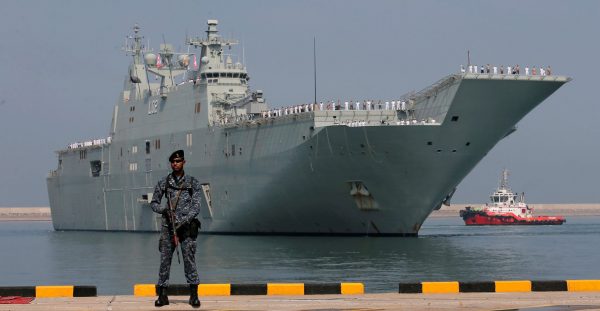The ECT deal is yet another of Sri Lanka’s entanglements in regional and global power rivalries, which are being played out on its shores. Ownership over maritime port connectivity appears to have become symbolic of this power play.
A tripartite agreement on the ECT is expected to be concluded within three months. Japan has stepped forward with the offer of a soft loan for the first phase of the project. Other institutional arrangements appear to include the setting up of a Terminal Operations Company (TOC) in which Sri Lanka will hold a 51 per cent majority equity stake, while India and Japan will together hold the other 49 per cent. In a somewhat confusing clarification, Sri Lanka is still said to have 100 per cent ownership over the ECT itself.
But it was China that had a head start in investing in Sri Lanka’s infrastructure push. Under successive governments, two critical projects have come to guarantee China’s long-term presence in the country’s port infrastructure. The first is a joint venture to develop and manage the Colombo International Container Terminal, while the second is the construction of the Hambantota port on a loan taken out by Sri Lanka.
China Merchant Port Holdings holds an 85 per cent equity stake in the Colombo International Container Terminal, which became operational in 2013 as a 35-year build–operate–transfer project. The Hambantota port, which started operations in 2011, saw a 70 per cent equity transfer to China Merchant Port Holdings in 2017 on a 99-year lease (in what has been widely, and erroneously, cited as a poster case of Chinese ‘debt-trap diplomacy’ to force asset transfers).
What is not disputed is that the two projects have had widely differing performance outcomes. The Colombo International Container Terminal — accounting for 38 per cent of container handling at Colombo port in 2018 — has been a prime driver of improvements in the port’s overall performance. Colombo port, overall, was ranked 13th in the Drewry Port Connectivity Index in 2017, and was placed first by Alphaline Global Ports’ 2018 rankings of container handling. In contrast, Hambantota port has failed to deliver. The Sri Lankan authorities opted to hand over the port to China Merchant Port Holdings, rather than channel additional investment to make the port financially viable.
Aside from port investments, China’s long-term footprint in Sri Lanka has also been assured through a direct investment of US$1.4 billion in the Colombo Port City project. The project is an ambitious reclamation of land, adjacent to the Colombo port itself, for development on yet another 99-year lease. The reclaimed land will be ready in July 2019 to attract its first set of investors.
Unsurprisingly, China’s geopolitical rivals are intent on catching up and making their own claims to ‘strategic assets’, whether in seaports or even airports. India has expressed interest in the China-built and unprofitable Mattala International Airport, which is found in close proximity to the Hambantota port.
Multiple countries, including China, had expressed interest in developing the ECT at Colombo port. Efforts to balance regional concerns with China’s already firm presence in Sri Lanka’s maritime connectivity infrastructure — not to mention political manoeuvers — saw negotiations drag on from 2016. Unsurprisingly, the Memorandum on the ECT is being interpreted in some quarters as providing an alternative to China’s Belt and Road ambitions in the region.
For financially constrained economies like Sri Lanka, soft loans from foreign governments to build vital infrastructure appear very attractive. The Colombo International Container Terminal is estimated to already be operating at 80 per cent capacity. While Colombo’s port performance bypasses its South Asian neighbours, it faces increased competition from rapid port developments in India and pressure from India’s relaxation of cabotage rules in 2018. With Indian shippers accounting for about 80 per cent of throughput at Colombo port, India’s commercial interest in developing the ECT can benefit Sri Lanka as well.
Clearly though, investing in maritime infrastructure connectivity comes at a price for a country like Sri Lanka. The risks from being caught up in a spiralling geopolitical contest are mounting. Understanding the long-term strategic implications of being bound up with a multiplicity of powerful rivals in maritime connectivity is increasingly important.
Dr Dushni Weerakoon is the Executive Director and Head of Macroeconomic Policy Research at the Institute of Policy Studies of Sri Lanka (IPS).

